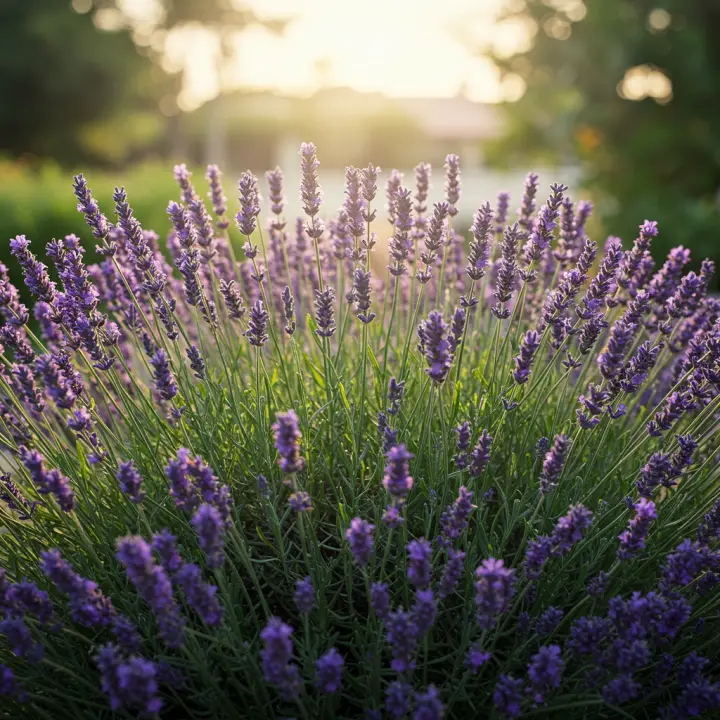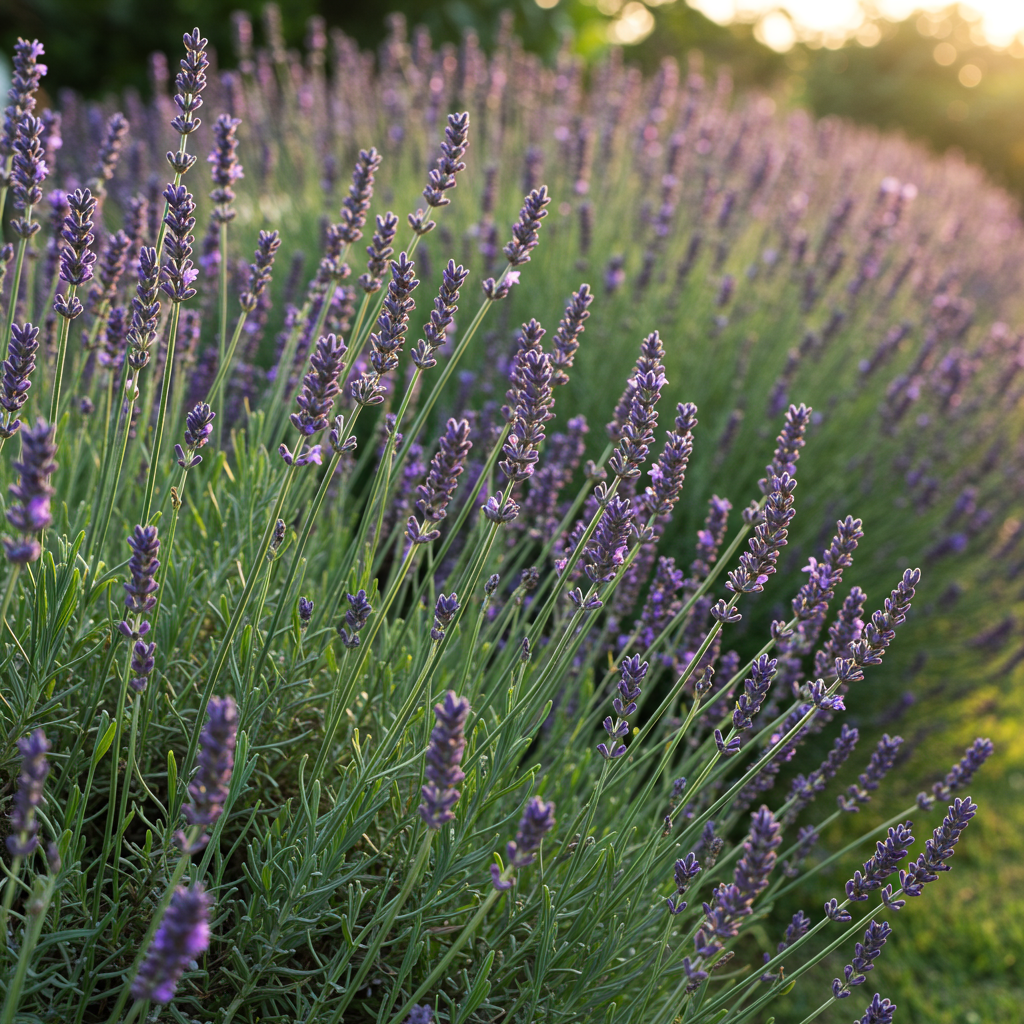Unlocking the Secret: Growing a Thriving Lavender Plant in South Florida’s Tropics

Growing a fragrant lavender plant in South Florida might seem like a gardener’s pipe dream, but with the right approach and plant selection, it’s absolutely achievable. This guide demystifies the process, helping you choose resilient varieties and implement expert care for effortless blooms in our unique climate.
South Florida’s lush, tropical climate is renowned for its vibrant foliage and exotic blooms, yet it often presents a challenge for plants typically associated with cooler, drier Mediterranean regions. The beloved lavender, with its iconic purple spires and soothing fragrance, is one such plant that many assume can’t thrive here. However, with strategic variety selection and thoughtful cultivation techniques, you absolutely can enjoy a flourishing lavender plant in your South Florida garden. It’s time to dispel the myth and embrace the possibility of bringing this aromatic beauty to your backyard.
The South Florida Lavender Challenge: Heat, Humidity, and High Rain
The primary obstacles to growing a traditional lavender plant in South Florida are our intense heat, high humidity, and frequent heavy rainfall. Most classic lavender varieties, like English lavender (Lavandula angustifolia), prefer dry heat, well-draining sandy soil, and less moisture. Our typical conditions – especially the persistent humidity and afternoon deluges – can quickly lead to root rot and fungal diseases if the wrong variety is chosen or proper care is neglected.
But don’t despair! Certain lavender species and cultivars have evolved greater resilience, making them far better candidates for our challenging tropical environment.
Choosing Your Champion: The Best Lavender Varieties for South Florida
The key to success lies in selecting lavender types specifically known for their heat and humidity tolerance. Forget the delicate English lavenders; we need tougher, more robust options.
Here are the top contenders for a thriving lavender plant in South Florida:
Spanish Lavender (Lavandula stoechas): Often called “Butterfly Lavender” due to its distinctive bunny-ear-like bracts, Spanish lavender is arguably the most successful lavender for South Florida. It tolerates heat and humidity much better than its English cousins and often blooms almost year-round in our climate.
Recommended Cultivars: ‘Anouk’ and ‘Otto Quast’ are popular, sturdy choices.
French Lavender (Lavandula dentata): Characterized by its finely toothed, slightly fuzzy leaves and elongated flower spikes, French lavender is another excellent option. It’s relatively hardy and handles our conditions better than English varieties, offering a lovely, mild aroma.
‘Phenomenal’ Lavender (Lavandula x intermedia ‘Phenomenal’): This hybrid, a cross between English and Portuguese lavender, lives up to its name. While often listed for zones up to 8 or 9, many South Florida gardeners have reported success with ‘Phenomenal’ due to its exceptional tolerance to heat and humidity, sturdy growth, and long-lasting blooms. It’s a great choice for its classic look and fragrance.
‘Grosso’ Lavender (Lavandula x intermedia ‘Grosso’): Another robust Lavandin hybrid, ‘Grosso’ is famous for its strong fragrance and long stems, making it ideal for sachets and essential oils. Like ‘Phenomenal’, it shows good heat and humidity tolerance, although some report ‘Phenomenal’ to be slightly more resilient in subtropical conditions.
Cultivating Success: Optimal Growing Conditions for Lavender in South Florida
Once you’ve chosen the right variety, providing the proper environment is crucial. Think about replicating its native dry, sunny habitat as much as possible.
1. Sunlight – The More, The Better!
Your lavender plant needs full sun, meaning at least 6-8 hours of direct sunlight per day. Too little sun will result in leggy growth, fewer blooms, and increased susceptibility to disease.
2. Soil – Drainage, Drainage, Drainage!
This is arguably the most critical factor for lavender in South Florida.
Excellent Drainage: Lavender hates wet feet. Our native sandy soils can be an advantage, but they often retain too much moisture, especially with high humidity.
Raised Beds or Containers: These are highly recommended. A raised bed allows you to control the soil composition completely, ensuring proper drainage. Containers are also excellent, provided they have ample drainage holes.
Soil Mix: Create a fast-draining mix. Use a combination of sandy loam, perlite, pine bark fines, or small gravel. Amend heavy soils with sand, grit, and compost. Consider adding a small amount of dolomitic lime to slightly raise the pH, as lavender prefers a neutral to slightly alkaline pH (6.5-7.5).
3. Watering – Less is More
Overwatering is the quickest way to kill a lavender plant in South Florida.
Establishment Phase: Water regularly for the first few weeks after planting to help establish roots.
Mature Plants: Once established, lavender is drought-tolerant. Allow the soil to dry out completely between waterings. Stick your finger an inch or two into the soil; if it’s dry, it’s time to water. Reduce watering significantly during our rainy season.
Morning Watering: Water in the morning to allow foliage to dry before nightfall, reducing fungal risk.
4. Air Circulation – Combatting Humidity
Good air circulation is vital to prevent fungal diseases in humid South Florida.
Spacing: Plant lavender with ample space around it to allow air to flow freely.
Pruning: Regular pruning (discussed below) also helps improve air circulation within the plant.
Essential Care Tips for Your South Florida Lavender
Planting: When planting, ensure the crown of the plant is at soil level, not buried too deep. If planting in a garden bed, consider mounding the soil slightly to further aid drainage.
Fertilization: Lavender prefers lean soil and generally doesn’t require much fertilizer. Too much nitrogen can lead to lush foliage but fewer flowers. If you do fertilize, use a balanced, slow-release granular fertilizer once in early spring, or a liquid feed at half strength. Avoid high-nitrogen feeds.
Pruning: Regular pruning is essential for maintaining plant shape, promoting new growth, and encouraging abundant blooms.
Post-Bloom Pruning: After the main flush of flowers fades, cut back about one-third of the plant’s height, focusing on removing spent flower stalks and shaping the plant. Avoid cutting into old, woody stems, as lavender often struggles to regrow from old wood.
Light Trimming: Throughout the season, deadhead spent flowers to encourage continuous blooming.
Pest and Disease Management: Healthy lavender plants are relatively pest-free. The main issue in South Florida is fungal disease due to excessive moisture. Proper soil, watering, and air circulation are your best preventative measures. If you spot fungal issues, address them promptly with organic fungicides if necessary, and adjust your care routine.
Harvesting Your South Florida Lavender
Harvesting your lavender at the right time ensures maximum fragrance and beauty.
When to Harvest: Harvest when the flower buds are fully formed but only a few of the bottom flowers have opened. This is when the essential oils are most concentrated.
How to Harvest: Cut stems in the early morning after the dew has dried, using sharp pruning shears. Bundle the stems together and hang them upside down in a cool, dry, dark place with good air circulation to dry.
FAQs About Growing Lavender in South Florida
Q1: Can any lavender grow in South Florida?
A: No, not just any lavender. Traditional English lavender (Lavandula angustifolia) struggles greatly and usually fails due to our high heat and humidity. You must choose heat and humidity-tolerant varieties like Spanish lavender (Lavandula stoechas), French lavender (Lavandula dentata), or ‘Phenomenal’ lavender.
Q2: What is the best type of lavender for South Florida?
A: Spanish lavender (Lavandula stoechas*) is widely considered the most successful and easiest to grow in South Florida’s climate due to its excellent heat and humidity tolerance.
Q3: How much sun does a lavender plant need in South Florida?
A: Lavender requires at least 6-8 hours of direct, full sun per day to thrive and bloom profusely. Less sun will result in weak growth and poor flowering.
Q4: What kind of soil is best for lavender in Florida?
A: Excellent drainage is paramount. Use a sandy, gritty, fast-draining soil mix, ideally in raised beds or containers. Amending with perlite, small gravel, and compost is beneficial. Lavender also prefers a slightly alkaline pH (6.5-7.5).
Q5: How often should I water my lavender in South Florida’s heat?
A: Water infrequently but deeply. Allow the soil to dry out completely between waterings. Overwatering, especially during the rainy season, is a common cause of failure. Always check the soil moisture before watering.
Q6: Do I need to prune lavender?
A: Yes, regular pruning is crucial. Prune after the main flush of blooms fades, cutting back about a third of the plant’s height to maintain shape, encourage new growth, improve air circulation, and promote more flowers.
Conclusion
Embracing the beauty and fragrance of a thriving lavender plant in your South Florida garden is no longer a distant dream. By thoughtfully selecting heat and humidity-tolerant varieties like Spanish or French lavender, and committing to proper cultivation practices – emphasizing full sun, impeccable drainage, and conservative watering – you can transform your outdoor space into a fragrant haven. With a little patience and the right approach, your efforts will be rewarded with delightful, aromatic blooms, proving that even in the tropics, lavender can truly flourish.

